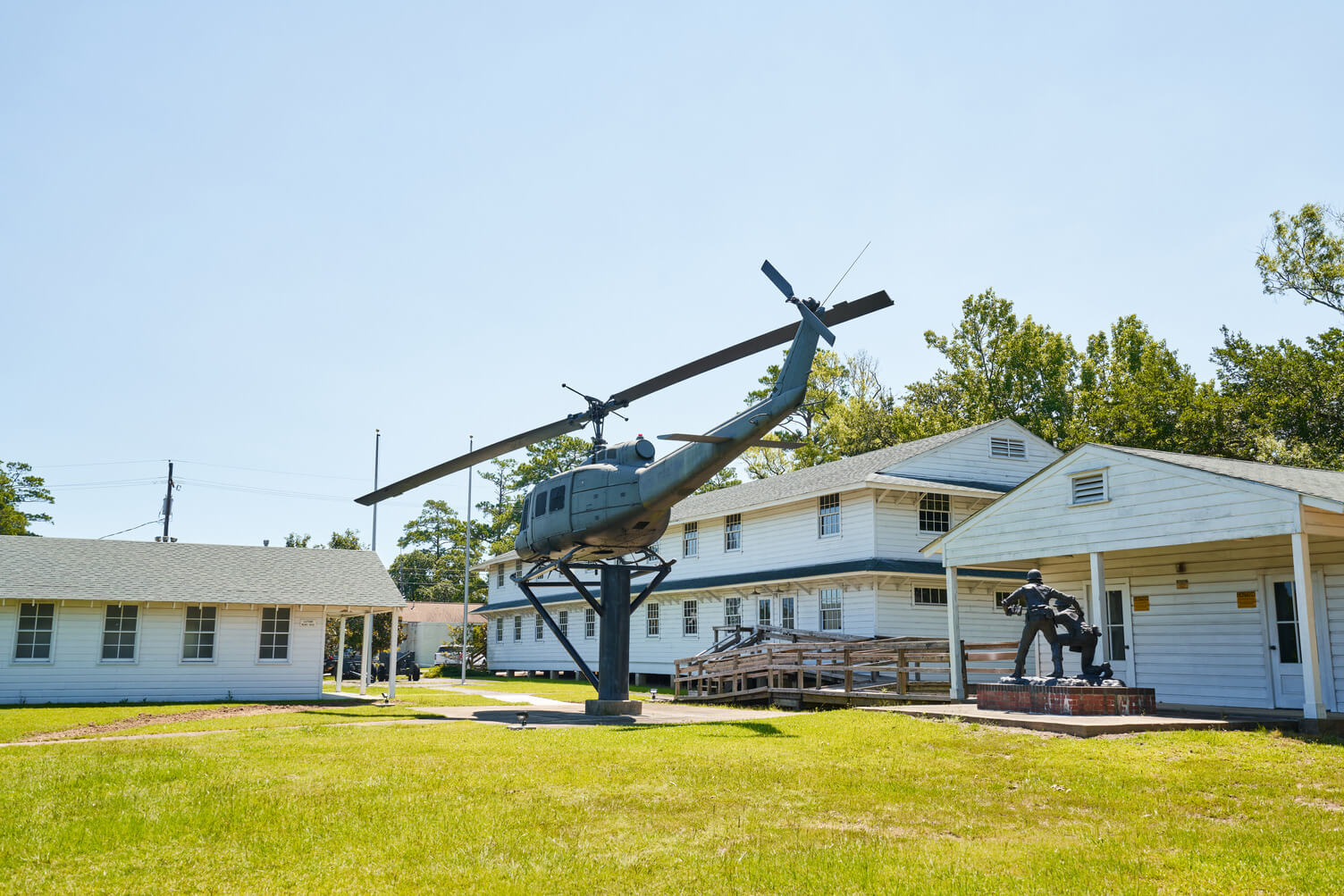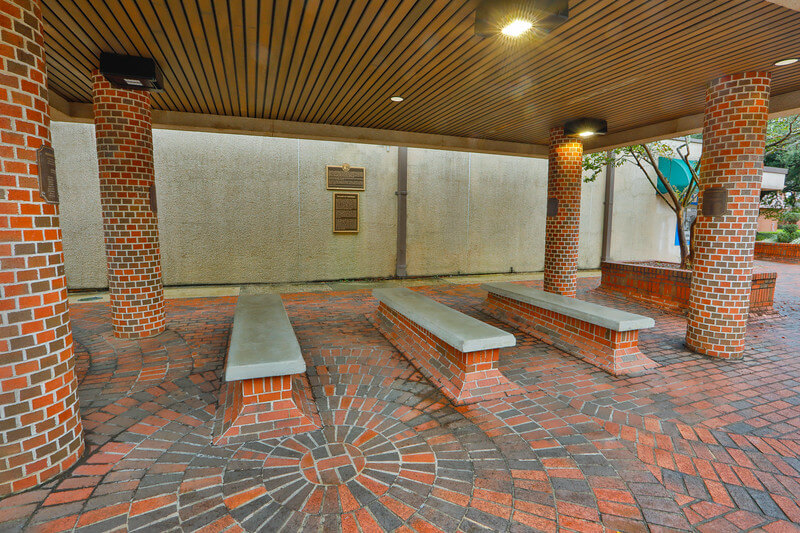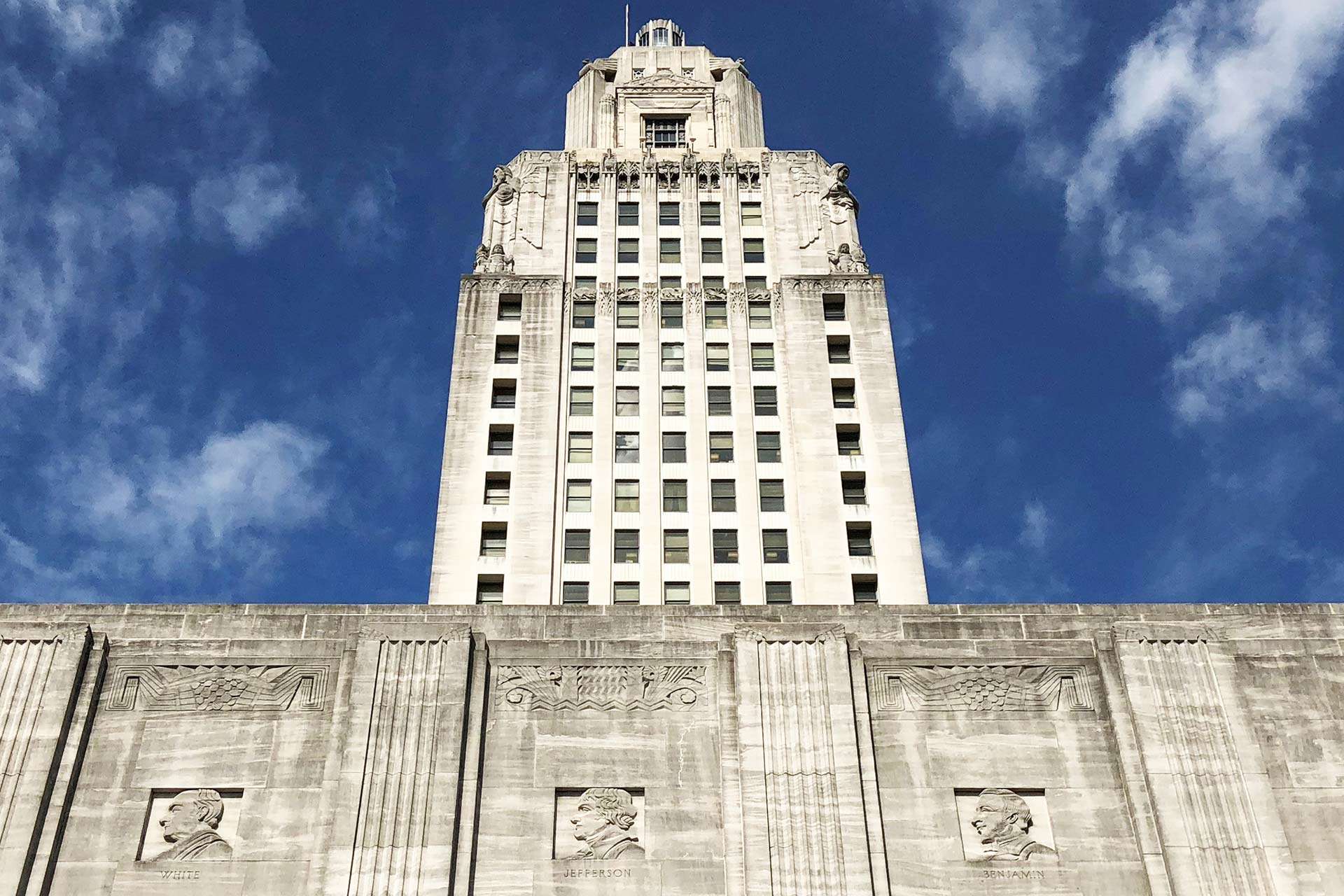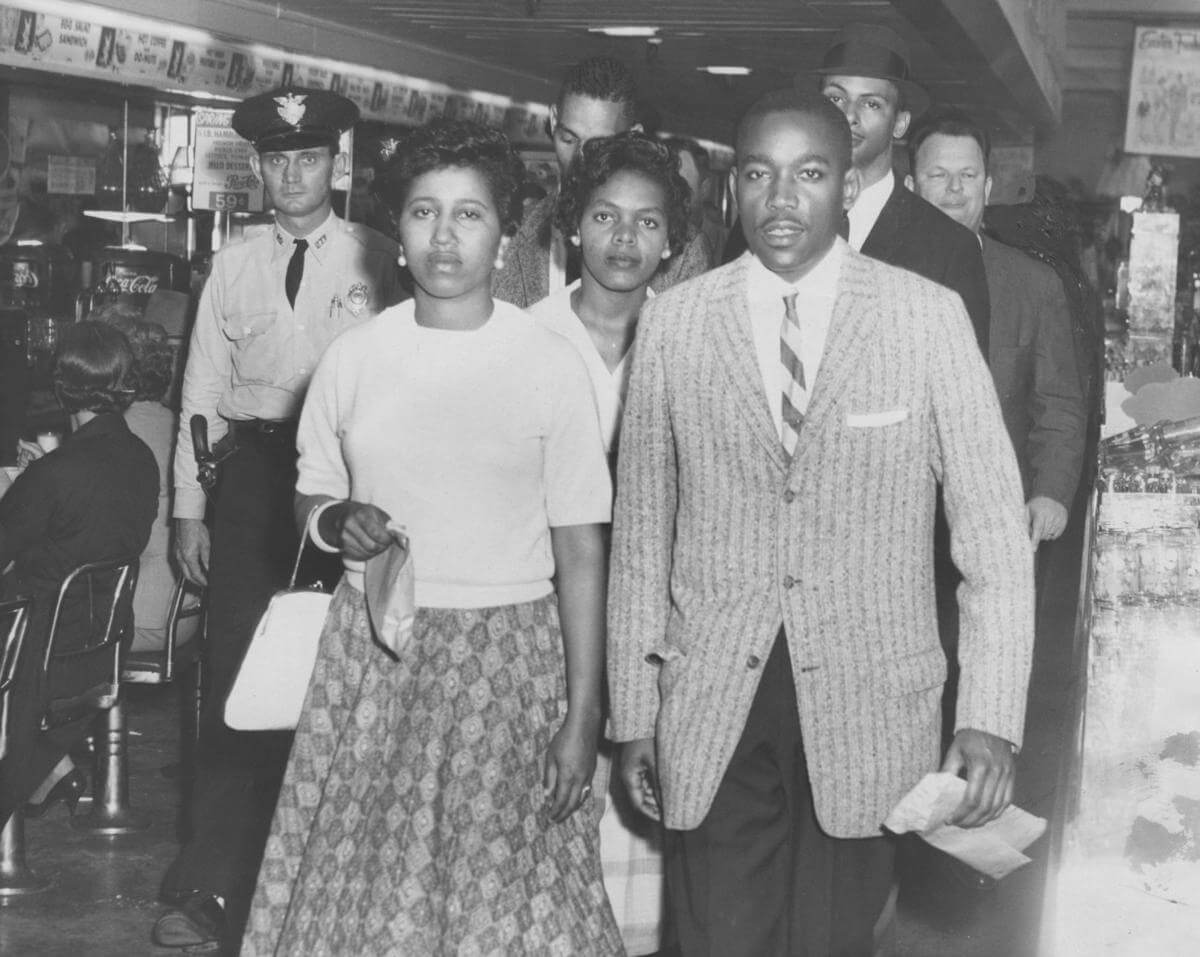Housed in a replica World War II barracks, the Louisiana Military Maneuvers Museum pays tribute to service members and civilians of Louisiana, with portions of the collections dating back to Colonial Louisiana.
Exhibits also explain the Louisiana Military Maneuvers. In 1940 and 1941, the U.S. Army came to the realization that they were short on manpower and in need of modernization, resulting in the implementation of a new strategy. The country mobilized the National Guard, conducted the first peacetime draft and selected several training sites. Louisiana was among the chosen sites due to its vast amount of available land, and more than 472,000 soldiers were trained in maneuvers there.
During the two years of training, new ideas emerge about the role of the U.S. Army Air Forces, mechanized warfare, and logistics. Well-known military leaders George Patton, Dwight Eisenhower, George Marshall and Omar Bradley were among those who played a major role in the maneuvers. The essential reorganization, planning and training ensured the U.S. Army emerged victorious in Europe and Asia, measures that continue to play a role in operations today.
Camp Beauregard, located five miles northeast of Alexandria, was originally called Cantonment Alexandria but was renamed Camp Beauregard. It served as the General Headquarters for the Maneuvers of 1941, commonly called the Louisiana Maneuvers. The camp also served as an induction center during World War II. It is currently a Louisiana Army and Air National Guard training facility and home to the Louisiana Military Maneuvers Museum.
Brought into existence on April 1, 1942, at Camp Claiborne, Louisiana, the 761st Tank Battalion trained during the Louisiana Maneuvers. The battalion was an experimental unit, just like the Tuskegee Airman of Alabama and was attached to many commands in Europe. Eight infantry divisions used this armored unit for direct support. As part of Gen. Patton’s Third Army, the group’s fighting ability became legendary and it acquired the nickname “Patton’s Panthers.”
The battalion began training in M5 Stuart light tanks. The men learned how to maneuver, mount, dismount and maintain the vehicle’s 37 mm main gun and .30-caliber machine guns. Final training was at Fort Hood, Texas, where they were upgraded to the M4 Sherman medium tank, which had a 75 mm main gun, two .30-caliber machine guns, a .50-caliber machine gun and a 2-inch smoke mortar.
By showing their prowess, this unit and others proved that the Army did not need segregated units. On July 26, 1948, President Harry S. Truman signed Executive Order 9981 desegregating the United States Army.
The Louisiana Military Maneuvers Museum at Camp Beauregard has exhibits and interpretation regarding the Black troops and their military actions.











